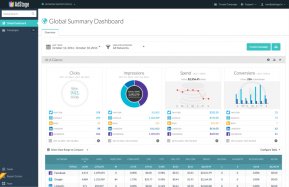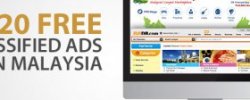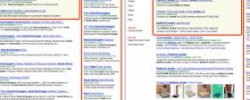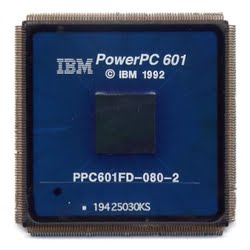So now that you know the benefits and disadvantages of SEO and pay-per-click marketing, it's time to dive into four PPC traffic sources that you can use to drive visitors to your website. While there are several networks attempting to attract advertiser dollars, the following four options are all established platforms that provide quality traffic.
Google AdWords. This is the most popular pay-per-click option simply because of the volume of traffic it can provide. Google is the largest search engine, commanding a huge 67 percent search market share.
Pros
- Traffic volume: Google commands a huge percentage of search traffic, giving you access to millions of consumers that are actively searching for your product or service.
- Top ad positions immediately: There is no waiting game to reach the top position. If you are willing to outbid the competition, your ads can be sitting at the top positions right away.
Cons
- Clicks can be expensive: You will typically pay a higher cost per click (CPC) on AdWords when compared to other pay-per-click platforms.
- Learning curve: AdWords can take some time to fully grasp and users that don’t fully understand how it works will end up paying higher CPCs than other advertisers that have properly optimized their campaigns.
Yahoo! Bing Network. This platform gives advertisers access to the majority of the search market that isn’t using Google. More information about YBN can be seen in this infographic.
- Lower CPCs: Keywords that are quite expensive on AdWords will typically be much more affordable on the Yahoo! Bing Network. Lower CPCs provide a great opportunity to test ad copy and keywords before transferring them over to AdWords.
- Great customer service: If you have a question about your campaign, it is easy to get someone on the phone (yes, a real human!) that will gladly answer your questions. This is great for advertisers new to PPC marketing.
- Lower search traffic: The search volume is considerably lower when compared to Google AdWords.
- Limited growth: Since the search volume is fairly low, it can be hard to grow some campaigns the same way you can on AdWords.
Facebook. The largest social network allows you to introduce your product or service to the more than 1 billion users that currently use it. Over 50 percent of all active Facebook users visit daily, providing you with a massive audience to interact with.
- Several targeting options: Facebook allows you to target specific demographics, geographical regions and user interests. If you wanted to target men between the ages of 21 to 35 that live in Miami and “like” the Miami Dolphins, it can easily be done.
- Largest consumer database: As mentioned before, you have direct access to everyone that is on Facebook, which right now is the largest and most powerful social platform in existence.
- Lower CTR: The click-through-rate is typically much lower than a paid ad triggered by a search query on Google, Yahoo or Bing. Facebook users aren’t actively seeking your product or service.
- Needs constant refreshing: If you are targeting a small user base, then you will need to constantly switch up your ad copy and images to avoid ad fatigue.
Advertising.com (Sponsored Listings). This is a division of AOL that allows advertisers to target specific websites and adjust bids based on the particular websites they want to appear on. Some examples of the inventory include Huffington Post, ESPN and major news media websites such as ABC.
- Top websites: The website inventory available through the Sponsored Listing program is impressive. You are in complete control over which websites your ads appear on.
- Affordable visibility: You will notice that your ads receive a lot of impressions since they are appearing on websites that receive millions of page views every day. The top bids on some positions can be high, but based on the sheer volume of traffic these sites receive, it is possible to make minimum bids and still receive a lot of exposure.
- Lower conversion rates: Since you are just targeting specific websites and not specific users, the conversion rates are going to be significantly lower compared to when you are attracting clicks from individuals that are actively seeking your product or service.
- Lower click-through rates: CTR will generally be lower than PPC ads on the search engines, since you are attracting impulse clicks.







 PowerPC (short for Performance Optimization With Enhanced RISC – Performance Computing, sometimes abbreviated as PPC) is a RISC architecture created by the 1991 Apple–IBM–Motorola alliance, known as AIM. PowerPC, as an evolving instruction set, has since 2006 been...
PowerPC (short for Performance Optimization With Enhanced RISC – Performance Computing, sometimes abbreviated as PPC) is a RISC architecture created by the 1991 Apple–IBM–Motorola alliance, known as AIM. PowerPC, as an evolving instruction set, has since 2006 been...